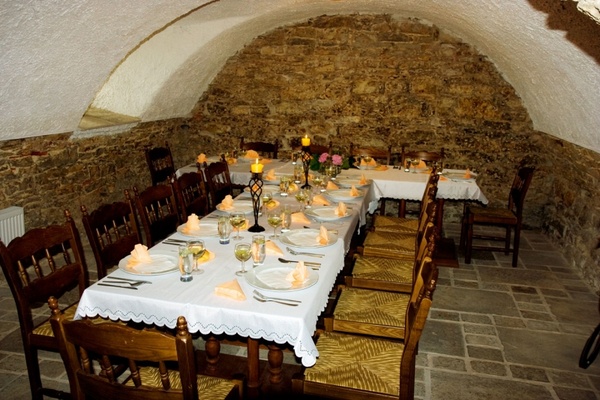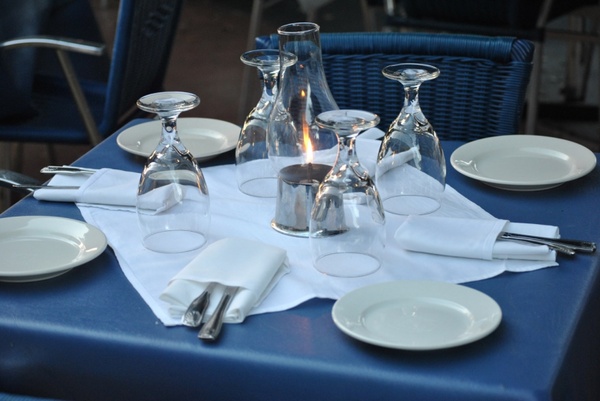
by Lorri | May 8, 2019 | UnCorked
I recently read an article about the death of the dinner party. It was an interesting read but it left me with mixed emotions. The article argued we have veered away from hosting sit-down dinner parties in our homes to instead gathering with friends at restaurants. And I agree, my husband and I find this form of entertainment effortless. But, at the same time I couldn’t wait to host my next dinner party!
There are many reasons why the classic dinner party isn’t as popular as it used to be — the obvious is the ease of meeting at a restaurant; but also time and planning; logistics of having enough dishes, glassware, flatware or chairs; limited cooking ability; and perhaps most tragic, that conservation and hosting may be becoming lost arts.
Another reason? Traditional dinner parties are viewed as stuffy, formal affairs. My suggestion is to move away from the formal setting and make the occasion casual.
An easy way of doing this is making the wine the central conversation piece of your gathering. Consider hosting a dinner with only three courses. Nothing complex, just a salad to start, main course and end with a dessert. I will leave the preparation to you but remember there is nothing wrong with picking up your courses from a local restaurant and serving them on your dishes. Pair each course with its own wine.
FIRST COURSE
Most salads will have high acid ingredients such as tomatoes, citrus and certain cheeses including goat, feta or cheddar. They pair best with high-acid wines like sauvignon blanc, riesling, Champagne or sparkling wines. To make this course an easy match avoid serving the salad with an assertive vinaigrette.
THE VALUE
- BV Coastal Sauvignon Blanc, California (about $11 retail)
THE SPLURGE
- Cliff Lede Sauvignon Blanc, California (about $26 retail)
MAIN COURSE
Let your main course be an easy dish you have already mastered. Remember, the goal of your dinner party is just casual conversation and a relaxed setting. If a pasta dish is one of your specialties or you are a grill master, then that’s what you should serve. Just use your cooking confidence to prepare a main course stress free to you. Keep it simple with a light bodied red wine.
THE VALUE
- Aime Boucher Pinot Noir, France (about $13 retail)
THE SPLURGE
- A to Z Oregon Pinot Noir, Oregon (about $21 retail)
DESSERT
There is nothing wrong with grabbing a dessert from your local grocer. And remember your wine can also be your dessert.
THE VALUE
- Chateau Hallet Sauternes, France (about $20 retail, 375 mL)
THE SPLURGE
- Jackson Triggs Vidal Icewine, Canada (about $28 retail, 187 mL)

by Lorri | Oct 19, 2016 | UnCorked
For some the restaurant wine list is a dreaded, somewhat embarrassing and often intimidating part of the dining experience. I frequently hear from Uncorked readers asking for advice on navigating the wine list.
For me, the first look at a restaurant’s wine list can be compared to the thrill of the first look at a page-turning novel. In all honesty, I sometimes enjoy exploring the wine list more than the food menu.
If you are in a fine-dining restaurant chances are strong they have given careful thought to the wine choices, pricing and food pairing options. With all due respect to my fellow wine managers, in these restaurants you could easily close your eyes, throw a dart at the list to pick your choice and end up with an excellent wine.
But just in case, here are a few tips to keep in mind for your navigation.
- Don’t be shy about asking your server for direction. Most are trained for this moment and it’s a pleasure for them to be asked to guide you on making an ideal choice. If stating the amount you are willing to spend is embarrassing with your date, family or business clients within earshot, there are subtle ways to direct your questions. On price, point to a wine that is the price you want to spend and simply say: “I’m looking for a wine in this price range that will match well with what the table is ordering.”
- If you prefer a specific varietal or drink only chardonnay but can’t find it on the list, there is no need to stress about your selection. Talk to your server about your love of the grape and ask for recommendations close to the style you enjoy.
- Plan ahead. Many restaurants have their menus and wine lists available online. Take a look and study your options before you go. If you are ordering the wine for your table, arrive a few minutes before your guests to discuss your options, confirm the website list is accurate and find out about any specials.
- Keep in mind a few safe and reliable regions and/or wine types. It’s possible to make a selection without recognizing specific vineyards, vintages or even brands. For value-priced whites consider Australian chardonnay, Italian pinot grigio and New Zealand sauvignon blanc. For value priced reds consider California zinfandel, Chilean cabernet sauvignon, Australian shiraz and French Cru Bourgeois.
- Consider the cuisine of the restaurant. If it’s Italian stay with Italian wines, for a tapas menu chances are Spanish wine selections will be ideal. This also offers a unique opportunity that the house wine is a reliable and ideal choice for your dining experience.
- Order by the glass to keep your options open throughout dinner. This is also ideal if you have many guests with diverse tastes.

